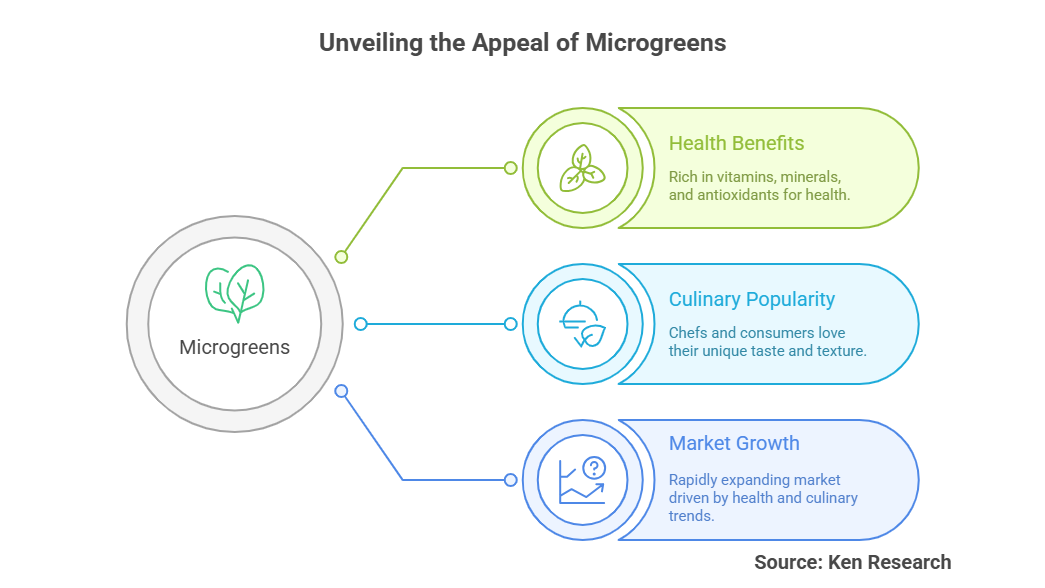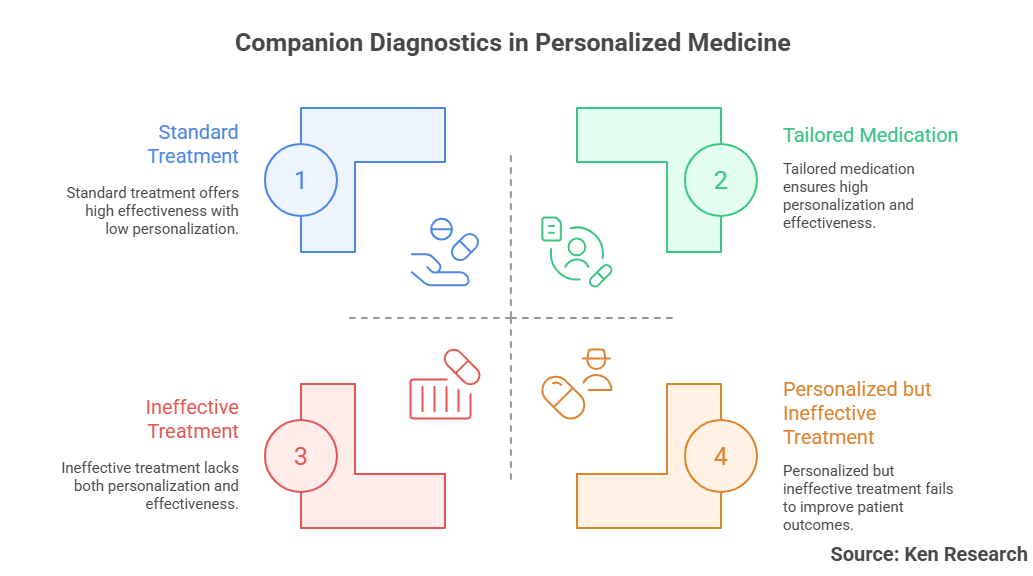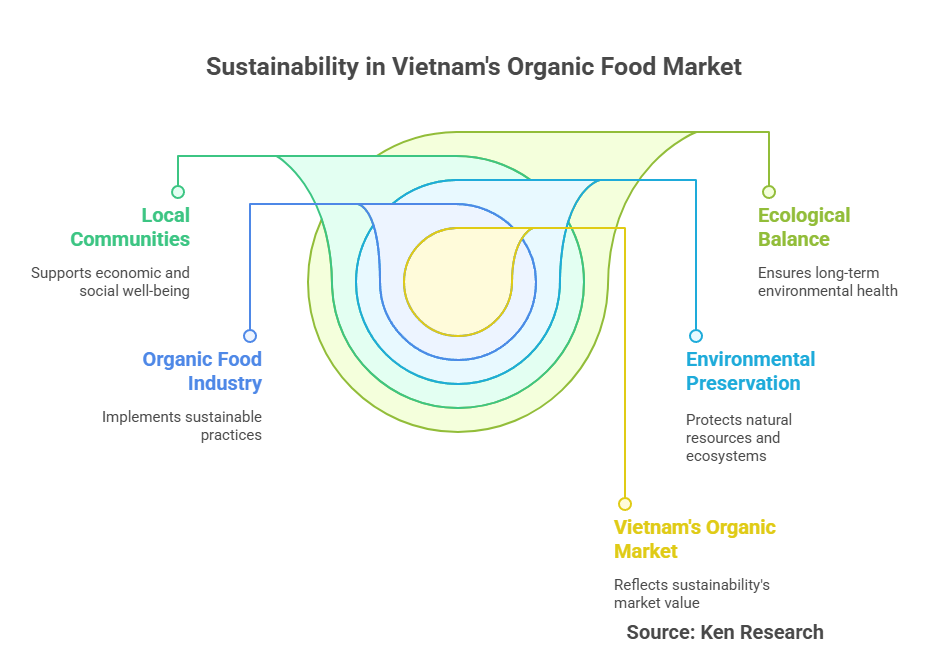Exploring The Burgeoning Microgreens Market- Trends, Challenges and Opportunities

Strong 8k brings an ultra-HD IPTV experience to your living room and your pocket.
Microgreens have taken the culinary world by storm, emerging as a highly sought-after health food trend. They are young edible plants, typically harvested just after the first true leaves have developed. Their vibrant colors, intense flavors, and nutritional benefits have made them popular among health-conscious consumers and chefs alike.
The surge in the microgreens market is driven by several factors:
- Health Consciousness: Increasing awareness of the health benefits associated with microgreens, such as higher nutrient density compared to mature greens, has propelled market growth. Studies indicate that microgreens can contain up to 40 times more nutrients than their mature counterparts.
- Sustainable Agriculture: Microgreens are typically grown quickly and require minimal space, making them an attractive option for urban agriculture. Their quick harvest cycle (around 7-21 days) allows for sustainable practices and a reduction in carbon footprint, appealing to environmentally conscious consumers.
- Culinary Versatility: The use of microgreens has expanded beyond traditional salads and garnishes. They are now incorporated into a wide variety of dishes, including smoothies, sandwiches, and even desserts, showcasing their culinary versatility and complex flavor profiles.
With these driving factors, the microgreens market is expected to experience significant growth. Understanding consumer preferences and leveraging the nutritional and environmental advantages of microgreens are essential for stakeholders aiming to capitalize on this burgeoning market.
For detailed insights into the current dynamics and future forecasts, visit the Global Microgreens Market.
Current Trends in the Microgreens Market
The microgreens market is experiencing rapid growth, driven by evolving consumer preferences, sustainability initiatives, and diverse culinary applications. As more people become health-conscious and environmentally aware, microgreens are increasingly embraced for their nutritional benefits and versatility.
- Health and Nutrition Focus: Consumers are gravitating towards microgreens due to their high nutrient density. Varieties like broccoli, kale, and radish microgreens are known to contain significantly higher levels of vitamins and antioxidants compared to their mature counterparts. Research indicates that these young seedlings can provide up to 40 times the nutrients of fully grown vegetables, making them a popular choice among health enthusiasts.
- Sustainability Practices: The push for sustainability is influencing the microgreens market, with many producers adopting eco-friendly farming techniques. Hydroponic and vertical farming methods are increasingly popular as they use less water and land while minimizing pesticide use. This aligns with consumer demands for sustainably sourced food, enhancing the appeal of microgreens in both retail and restaurant settings.
- Culinary Innovation: Chefs and home cooks alike are incorporating microgreens into a variety of dishes, thanks to their vibrant colors and delicate flavors. From garnishing high-end plates to enriching everyday meals, microgreens are elevating culinary experiences. Their adaptability to salads, smoothies, and sandwiches highlights their culinary versatility, making them a staple in contemporary cooking.
Challenges Facing the Microgreens Industry
The microgreens industry has witnessed impressive growth, yet several challenges are hindering its full potential. Growers must navigate a landscape filled with supply chain complexities, intense market competition, regulatory hurdles, and food safety concerns.
- Supply Chain Issues: Many microgreens growers encounter difficulties in sourcing high-quality seeds and obtaining timely shipments of supplies. Disruptions caused by global events can lead to delays in production schedules, impacting both yield and financial viability. Leveraging local suppliers and enhancing logistic strategies can mitigate such risks.
- Market Competition: The rise in popularity of microgreens has attracted numerous entrants into the market. Established brands and new startups compete fiercely, driving prices down and squeezing profit margins. Growers must differentiate their products through unique offerings or superior quality to maintain a competitive edge.
- Food Safety Concerns: The emphasis on food safety has never been more crucial, particularly in the wake of numerous foodborne illness outbreaks linked to leafy greens. Microgreens producers face scrutiny and must implement robust safety practices to ensure their products meet health standards, ultimately requiring investment in testing and cleaning procedures.
Opportunities for Growth in the Microgreens Sector
The microgreens sector is poised for substantial growth due to various trends and consumer demands. As health consciousness rises and preferences shift toward fresh, locally-sourced foods, the demand for microgreens is set to increase significantly. Companies operating within this market can capitalize on several key opportunities.
- Market Expansion: The increasing popularity of plant-based diets is encouraging new businesses and existing farms to venture into microgreens cultivation. This segment is expected to expand beyond traditional markets into sectors such as restaurants and retail, leading to greater revenue potential. The Global Microgreens Market Insights showcase a significant compound annual growth rate (CAGR) projected in the coming years.
- E-commerce Distribution: With online shopping becoming the norm, e-commerce channels for microgreens are gaining momentum. Innovative companies are exploring subscription-based models that deliver fresh microgreens to consumers' doorsteps, enhancing customer convenience and engagement. This method not only diversifies sales channels but also allows for a broader reach beyond geographic limitations.
- Global Outreach: Expanding into international markets offers microgreens producers the chance to tap into diverse consumer bases. Countries with rising health trends and increasing disposable incomes represent fresh opportunities for microgreens sales. Companies should focus on understanding regional preferences and compliance with local regulations to successfully establish their presence.
Conclusion
In conclusion, the microgreens market is experiencing significant growth driven by health consciousness, sustainability, and culinary innovation. As consumers increasingly seek nutritious and versatile food options, microgreens are well-positioned to meet these demands. Addressing challenges and leveraging opportunities will be crucial for stakeholders aiming to thrive in this dynamic market.
Note: IndiBlogHub features both user-submitted and editorial content. We do not verify third-party contributions. Read our Disclaimer and Privacy Policyfor details.







